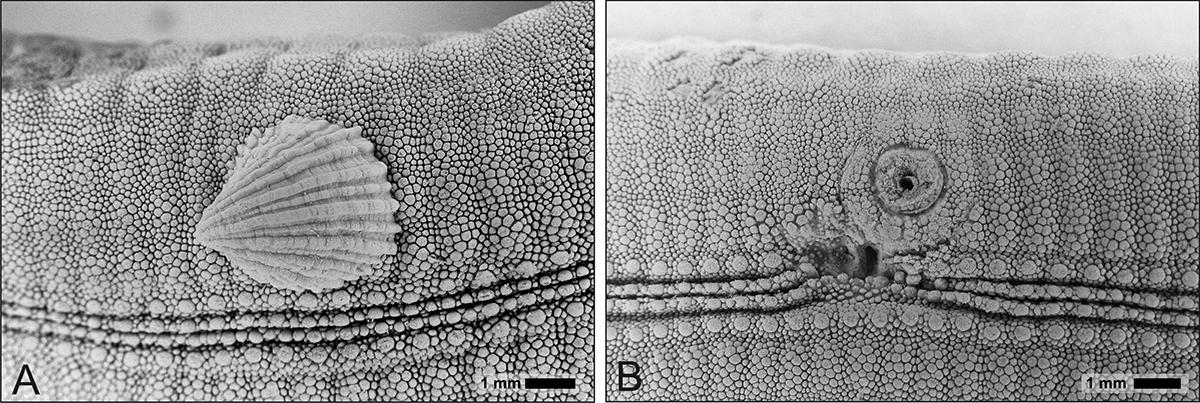Most modern parasites are small and do not have any mineralised body parts. One might therefore conclude that it would be difficult to study host-parasite relations over long geological periods on the basis of fossil evidence. However, this turns out not to be the case, as the fossil record is rich in traces of parasitic activity, and tissue responses elicited by parasites that can be found sometimes on host skeletons. Studying such traces could help to answer questions on the evolution of parasitic lifestyle.
Which organisms are the preferred hosts? Which groups are affected by parasitism? Have different parasitic strategies evolved within the same clade? Which adaptations to a parasitic form of life have been observed? Which processes of co-evolution can be observed between hosts and their parasites?
Echinoderms are a group of organisms that provide a perfect subject for the study of these interesting questions. They have a mineralised internal skeleton consisting of calcite, which is well preserved in fossils, providing a rich record of parasite traces and the tissue responses elicited by them. The sea urchin genus Echinocorys is particularly suited as a model organism because of its longevity (about 40 million years) and its almost global distribution. It was found in a large variety of habitats and is usually well preserved. The sheer number of preserved specimens in many collections makes it possible to carry out quantitative studies on the occurrence of parasites. It was found that many different organisms formed a symbiotic relationship with Echinocorys. In a first step, we demonstrated in several case studies how diverse the parasites were and what different strategies of resource exploitation they used. This will be followed by looking at dynamic processes within these host-parasite systems (e.g., co-evolution). It is particularly intriguing that the host organism Echinocorys survived the mass extinction at the Cretaceous/Paleogene transition. But what effect did this mass extinction event have on its parasites?

Fig. 1: The modern snail Thyca callista (family Eulimidae) parasitizing on a starfish. Left the snail, right its trace on its host (recent, Philippines).